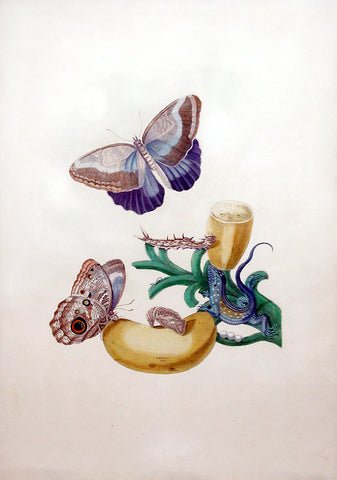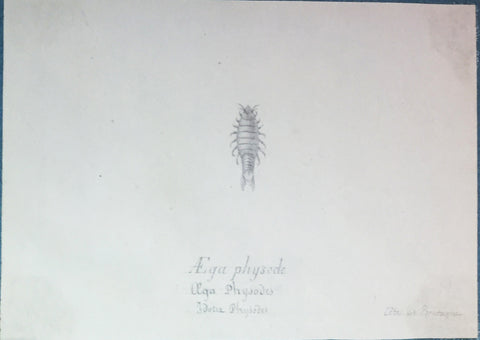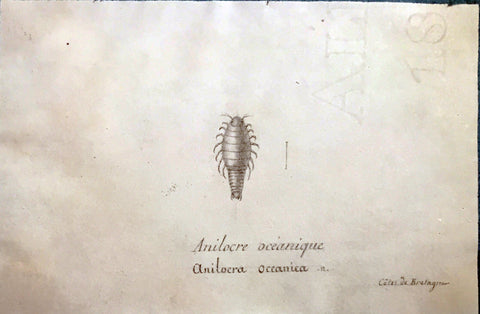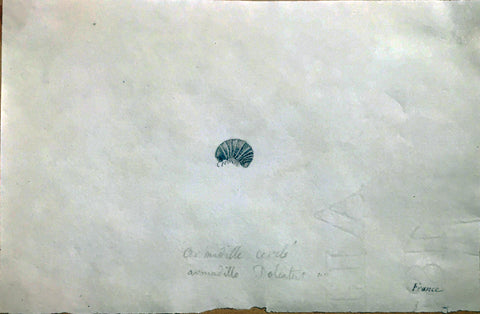
Maria Sibylla Merian (German, 1647-1717), Plate 23. Plantain (Musa paradisea) and Caligo teucer
Maria Sibylla Merian (German, 1647-1717)
“Plate 23. Plantain (Musa paradisea) and Caligo teucer”
from The Insects of Surinam
Watercolor and bodycolor with gum arabic over lightly etched outlines on paper
Amsterdam, 1705
Paper size: 20 1/4 x 14 in.
Transfer-print watercolors from The Insects of Surinam
This attractive owl butterfly, Caligo teucer (Linnaeus), is shown in flight and resting on a variety of banana. Merian wrote of this butterfly, “both its upper wings are a light ochre color, the other two are a beautiful blue”.
The identification of the lizard has been the subject of some debate amongst naturalists, it is now generally agreed to be a member of the Cnemidophorus lemniscatus species complex. Merian noted that she included the lizard in this watercolor as “decoration” and that the lizard “built its nest in the floor of my house; in this nest lay four eggs, white and round, like the three to be seen on the stalk. I brought them back with me in the ship to Holland and while we were at sea the baby lizards crawled out of the eggs, as small as the one to be seen on the stalk.”
Descriptions of each plant adapted from J.Harvey’s commentary to the Folio Society facsimile of the Surinam Album (London, 2006) and Merian’s text for the Insects of Surinam.
One glimpse of any of Merian’s transfer-print watercolors from the Insects of Surinam reveals the main reasons for such celebration. Even to those who do not know of her work, this is a stunning sight. Her colors are alternately subtle and vibrant, capturing the quality of her subjects with striking naturalism. Yet while she maintains a scientist’s eye for precision, her creative decisions and compositions give these images a style that is distinctly hers. Each image demonstrates Merian’s masterful grasp of detail and nuance, as well as her outstanding ability to combine science and art. Equally significant, to early 18th century Europeans, her illustrations represented the first views of these American plants and insects.
These spectacular examples of her work are from one of a very few transfer-print watercolor volumes known to exist. Merian herself prepared the volume. After an uncolored print was made, she applied dampened paper to it, pressing by hand to create an image of the print in reverse. In this volume, she chose to block out the plate numbers and then add by hand, to some images, numbers, and notations. Merian then painstakingly watercolored the dried paper herself, ensuring that the colors were true to the specimens she had seen in South America, and also allowing her style to emerge with the greatest clarity. The volume was not meant for sale, and its intended purpose cannot be known with any certainty. Perhaps it was created as a gift for a wealthy and important patron, perhaps Merian meant to keep it herself. What can be stated without a doubt is that these splendid images represent a unique opportunity to acquire original works by an artist who broke barriers as a woman, as a scientist and artist, and whose accomplishments are no less impressive today than they were in her time.
Please feel free to contact us with questions by phone at 215.735.8811,
or by email at loricohen@aradergalleries.
We Also Recommend





